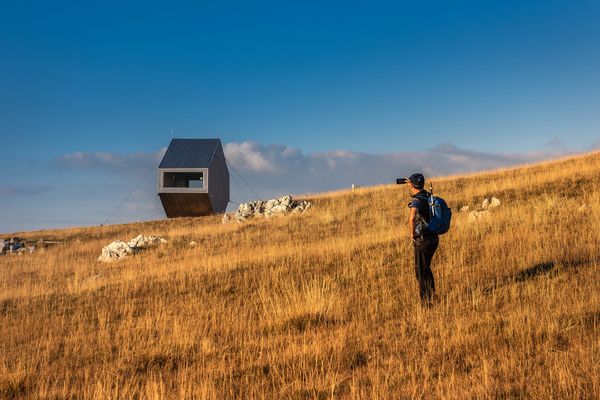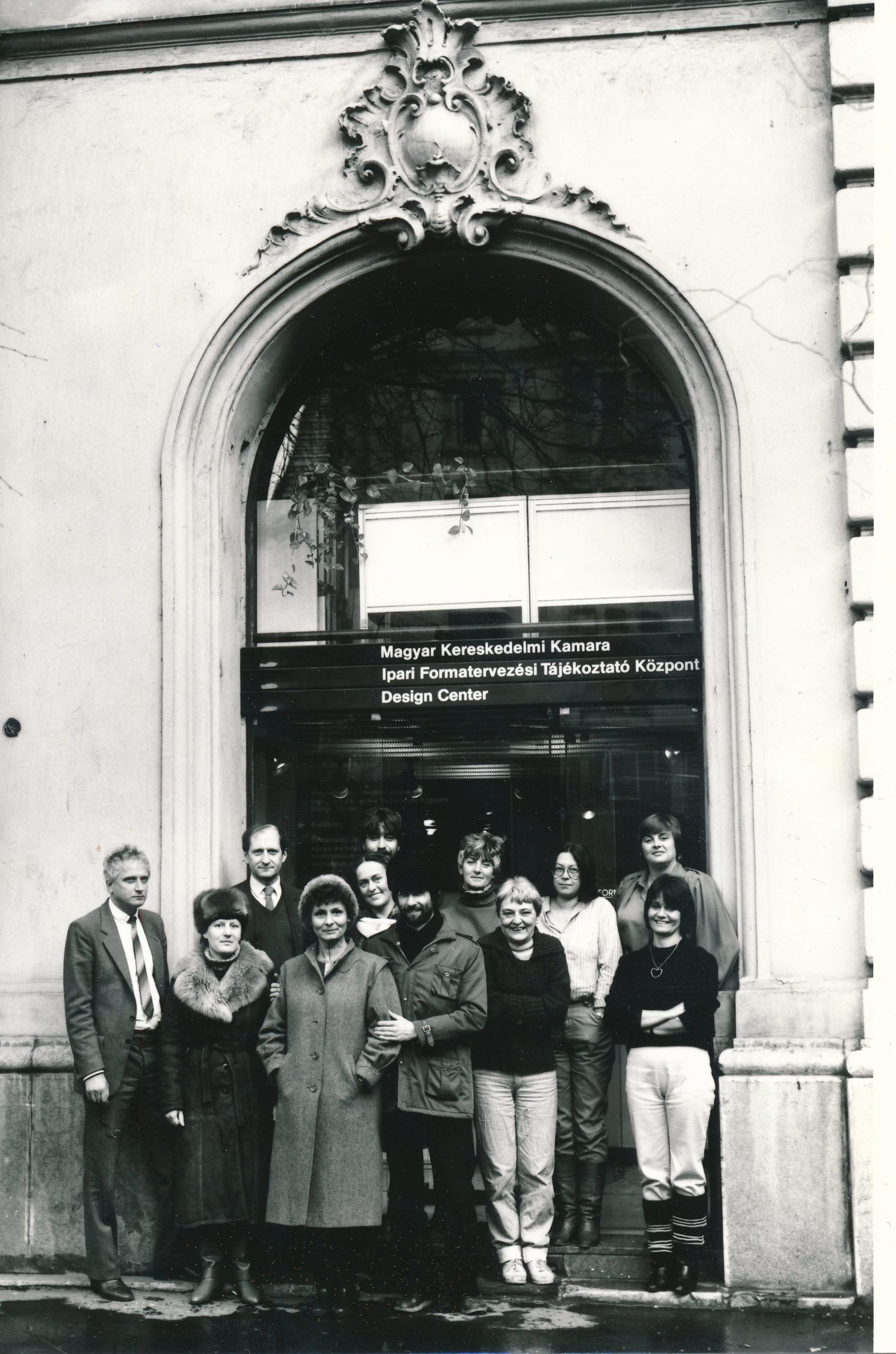No, this Design Center is not that Dizájn Center. It has nothing to do with Sándor Fábry or his TV show, but it had a major role in the history of Hungarian design. What was the role of Design Center? What events took place within the walls of the showroom in Gerlóczy utca? What does the expression “triangle of trust” mean? We will tell you all about it.
The study presenting the history of Design center titled “The Design Center: The institutional system of design in Hungary between 1975 and 1991” was implemented in the framework of the László Moholy-Nagy Design Grant: we have already introduced the details of the research in a previous article, and now we will reveal some fun facts about the history of the Design Center.
Dizájn Center? Design Center!
Many Hungarians remember Sándor Fábry analyzing the pieces of our Socialist heritage with due thoroughness and cynicism vividly: the winking wallet, the apple slicer and the nodding dog. Fábry launched Dizájn Center in 1990, in “Hócipő” magazine, and later also incorporated it into his solo tv show, thus putting a smile on Hungarian viewers’ face. Now, however, we talk about the Design Center that not only differs from Fábry’s funny block in terms of spelling, but also in terms of its mission.
The Design Center belonged to the jurisdiction of the Chamber of Commerce at the time, and was officially called the Industrial Design Information Center. The institution was called to life by a decree of the Council of Ministers in 1975 (the very same decree also declared the foundation of the Industrial Design Council, now known as the Hungarian Design Council). Once the preparatory works of the organization were completed, the Design Center finally commenced its official operation in 1977.
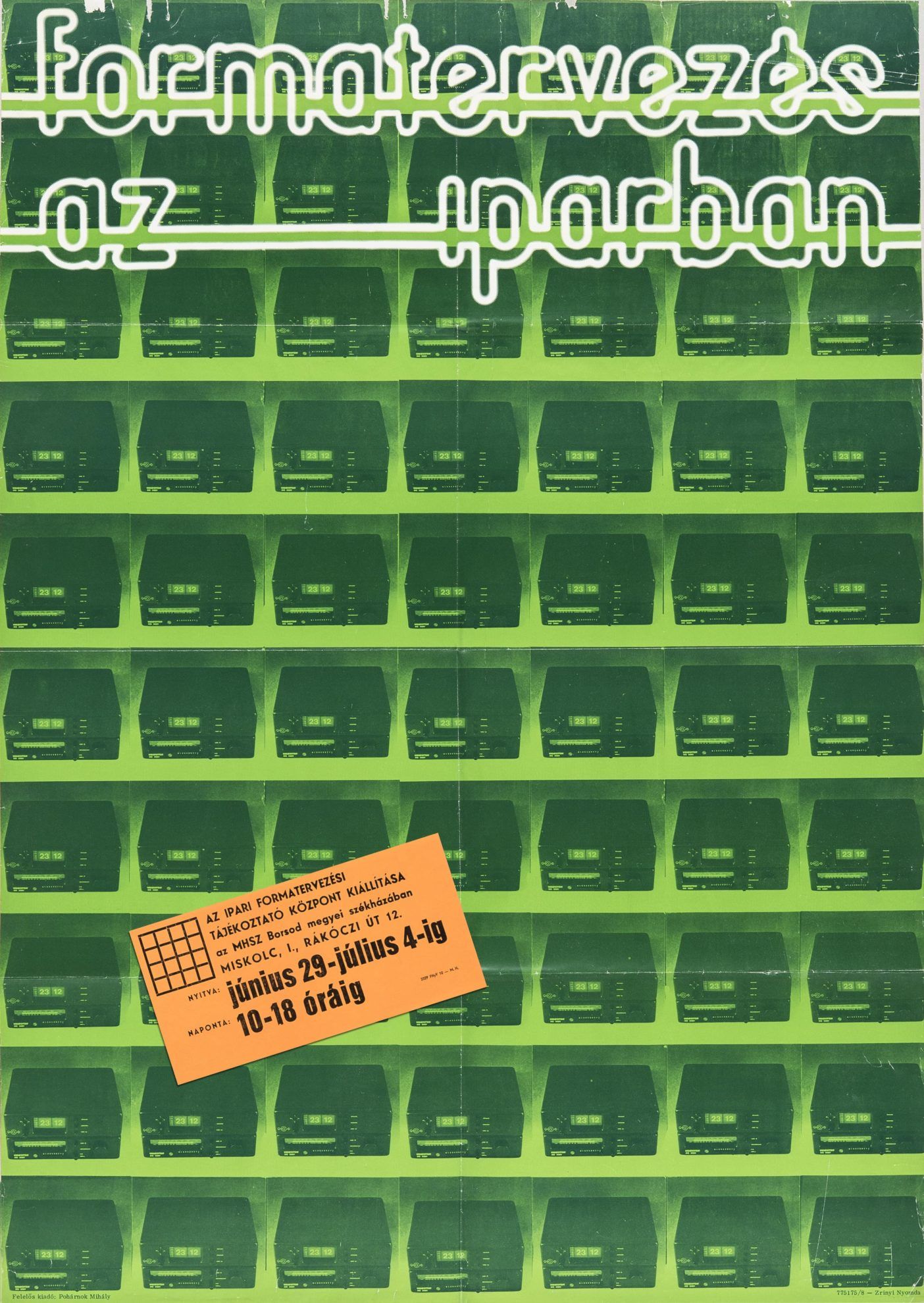
Who owns industrial design?
Although the history of Hungarian design and systematic design started earlier, the fledgling Hungarian design scene existed without an organized institutional network providing safety until the middle of the seventies.[1] The act adopted in 1975 primarily aimed to put this area into order, and so it divided the most important tasks into three: the Council was in charge of the theoretical and economic aspects of design, the Design Center was responsible for exhibitions and the provision of information, while the veteran Lectorate for Fine and Applied Arts exercised rights of evaluation. However, the relationship between the triumvirate was far from being cloudless: the institutions did not foster strong ties with each other, and so they also handled the matter of design with different approaches and many times as individual problems. With its exhibition-organizing activity, the most spectacular results were achieved by the Design Center undoubtedly.
What was the role of Design Center?
“The aim of the center’s activity is to upgrade the standards of design and to improve the quality of our physical environment so as to increase the market value and exportability of Hungarian industrial products” – says the draft written by Mihály Pohárnok, the appointed director of Design Center in the middle of the 1970s. The concept of Pohárnok, also known as the initiator of the famous Házgyári Konyhaprogram (House Factory Kitchen Program)[2], was to make the Design Center an organization building a bridge between the cultural sector and economic decision-makers and to help designers and factories find each other. The center virtually fulfilled a propaganda role: it promoted Hungarian design via various professional events, exhibitions, development projects and publications.
The showroom in Gerlóczy utca
The office of the Design Center operated in former Rosenberg házaspár utca (today known as Hold utca – the Ed.) from its foundation until 1980. In order for it to fulfil its tasks properly, it needed a publicly available “headquarters”: the showroom in Gerlóczy utca fulfilled this role, which opened its gates to the audience on March 11, 1980 (today it gives home to Gerlóczy Café).
The Design Center “inherited” the place from the Institute of Cultural Affairs: interior designer János Bánáti was appointed to design the interiors of the building. The renovation was implemented by Mátravidék Co-operative Society, the lighting solutions were provided by Szarvas Iron and Metal Industry Corporation, the loft received Almedia furniture and rolling Gádor chairs, while the carpets arrived from the Sopron Carpet Factory. The ground floor gave home to the reception and exhibition hall, and they placed the magazines and the documents of product registry on the loft. The exhibition hall first gave home to the exhibition „Terített asztal” (Table Set ), presenting Hungarian, Finnish and German (GDR) products.

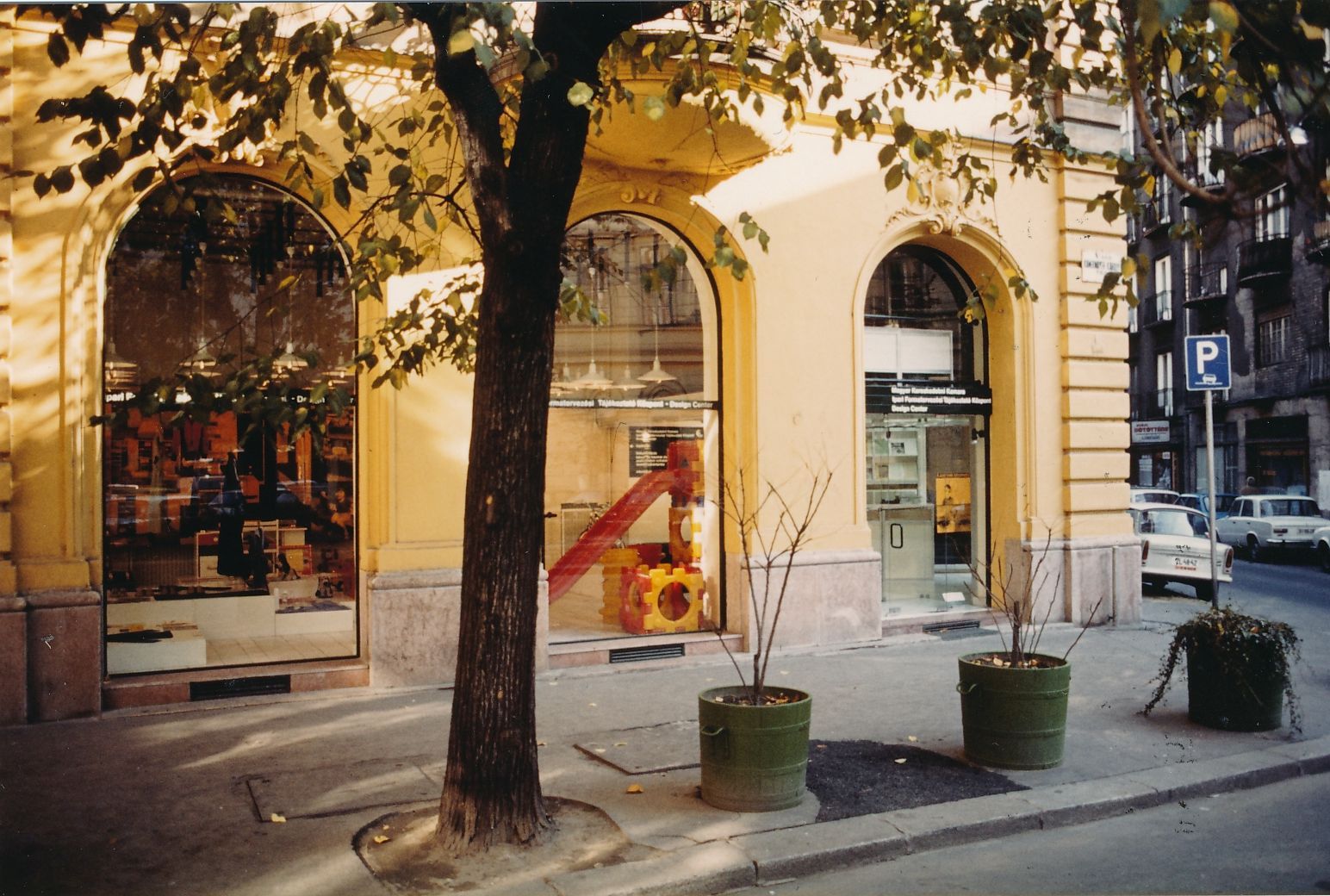

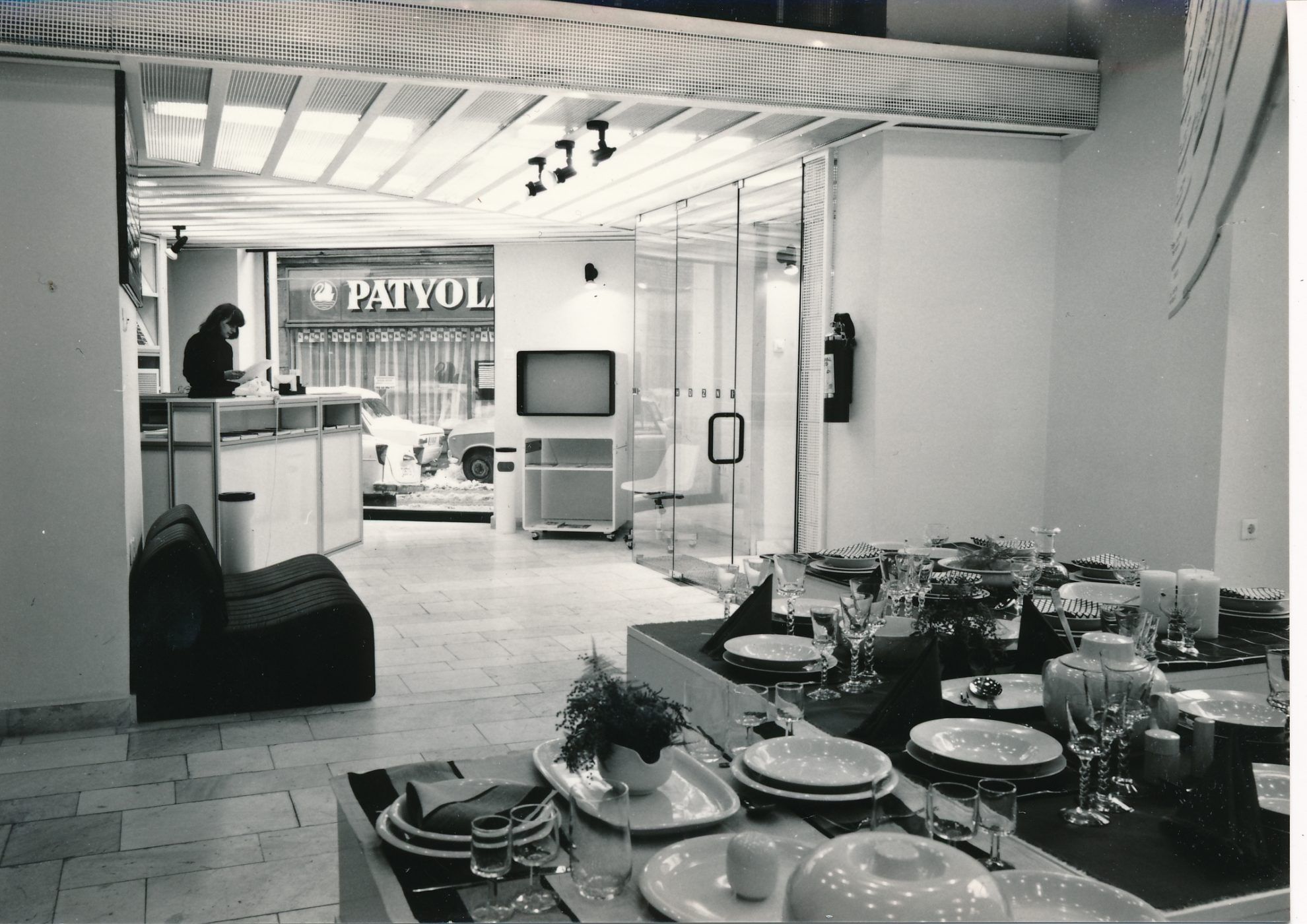
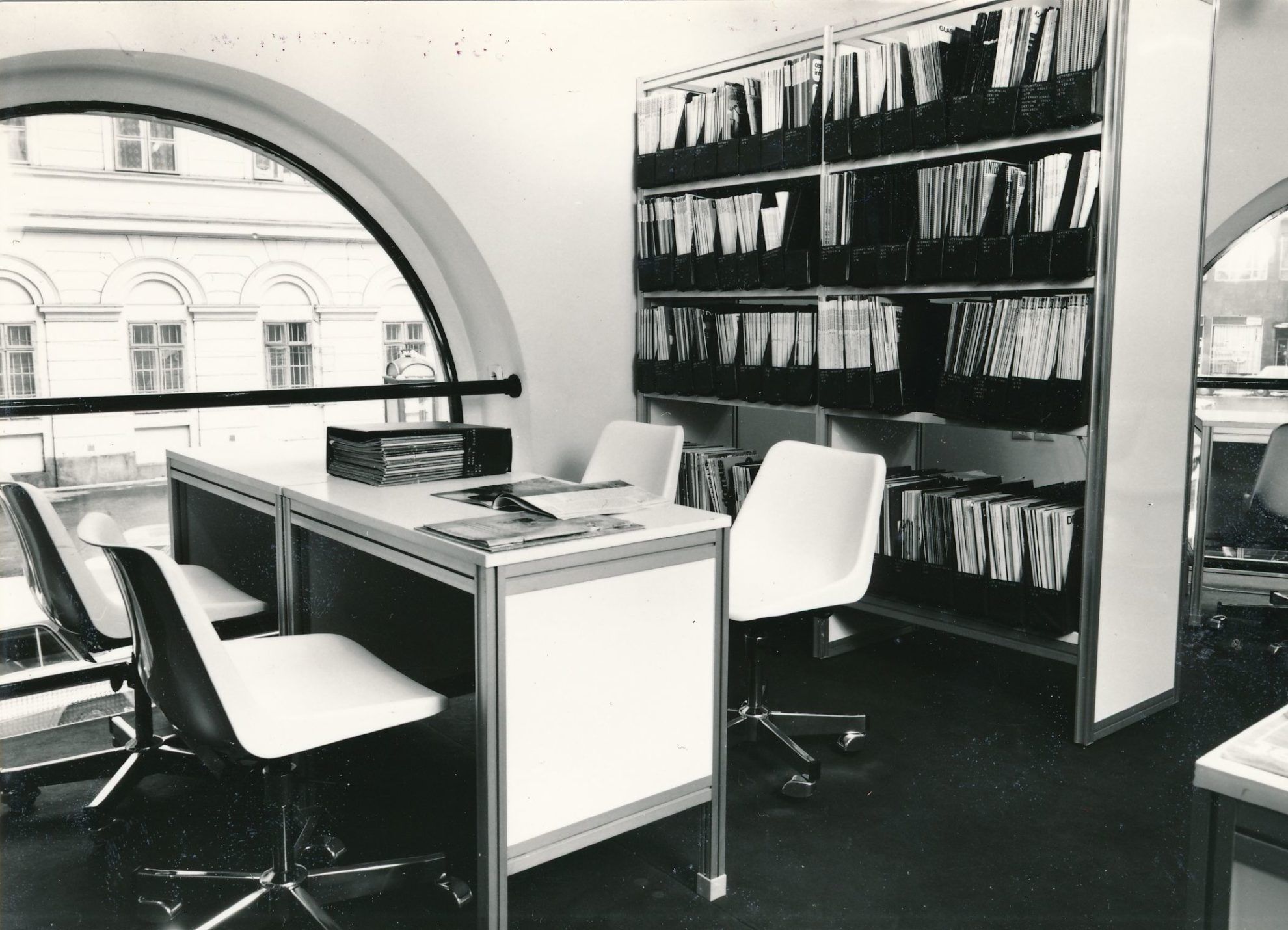
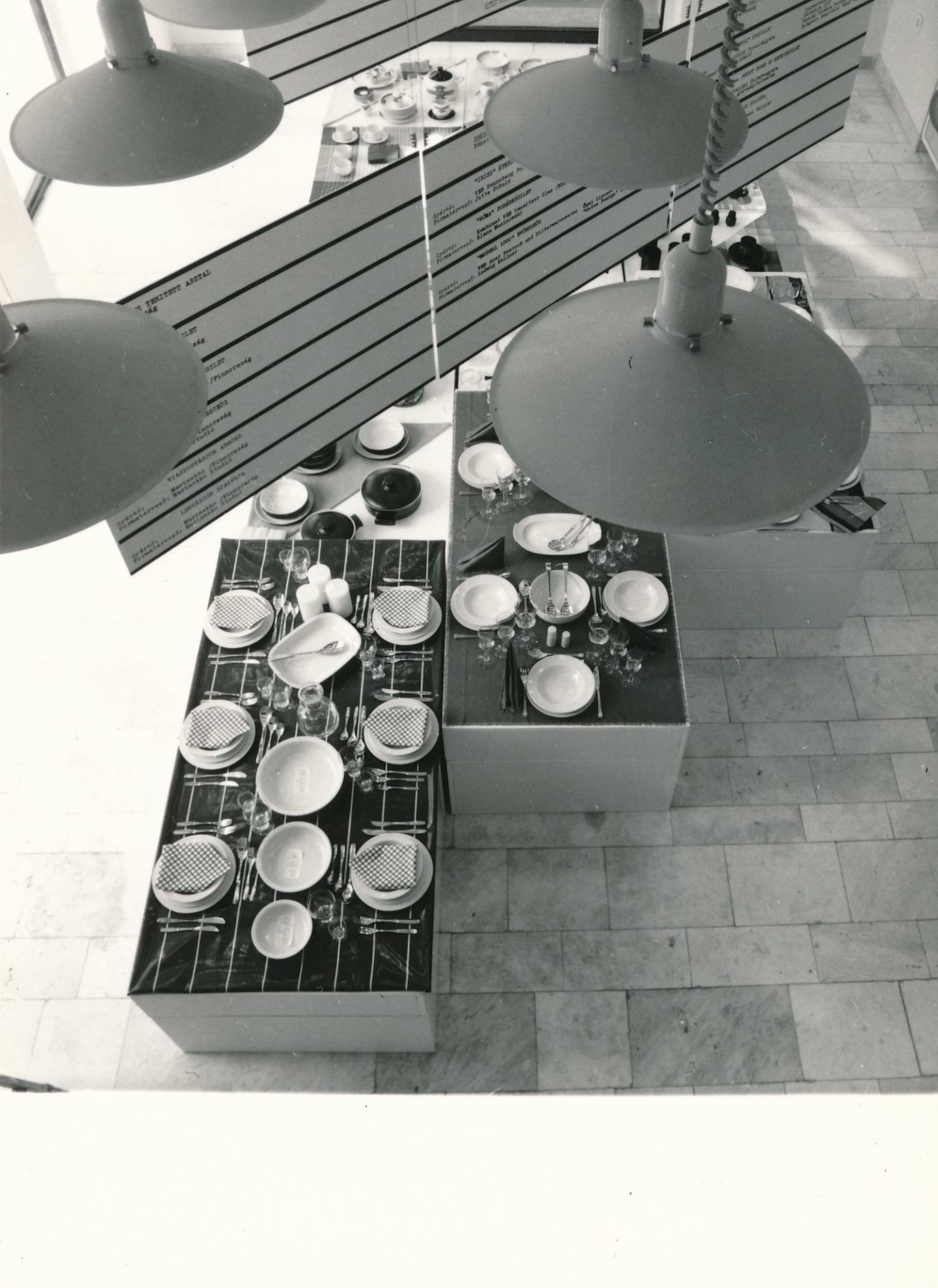
Design commerce
For the members of the chamber, the Design Center was a true odd one out, but during the almost two decades spent together, a peaceful, yet somewhat indifferent symbiosis was developed with the support organization. The name and former presence of the Chamber slowly fades away in the history of Design Center[3], however, the channels towards the world were undisputedly opened by the Department of International Affairs for them. During their operation, they contacted 25 similar Eastern and Western organizations, they participated in the activity of the working groups of world organizations (ICSID, IFI, ICOGRADA) and imported speakers and exhibitions to Budapest. The method of designer recruitment, for example, was taken over from the sister institution in London, the informal further education of Hungarian designers was continuous on the seminars of foreign speakers (Design Forum), and the most prestigious foreign design studios presented their products at their exhibitions, from Italy to Japan. When it came to design, the display items generally avoided the licensing procedure common in the case of visual art exhibitions – as a result, the decadent products of consumption culture were flourishing in the showroom in Gerlóczy utca. The leader of Design Center wasn’t less of a star when he held lectures abroad: the House Factory Kitchen Program of ‘72 quickly became known in the world – nothing was more fascinating abroad than a grassroot project with social objectives and the continuation of the same.
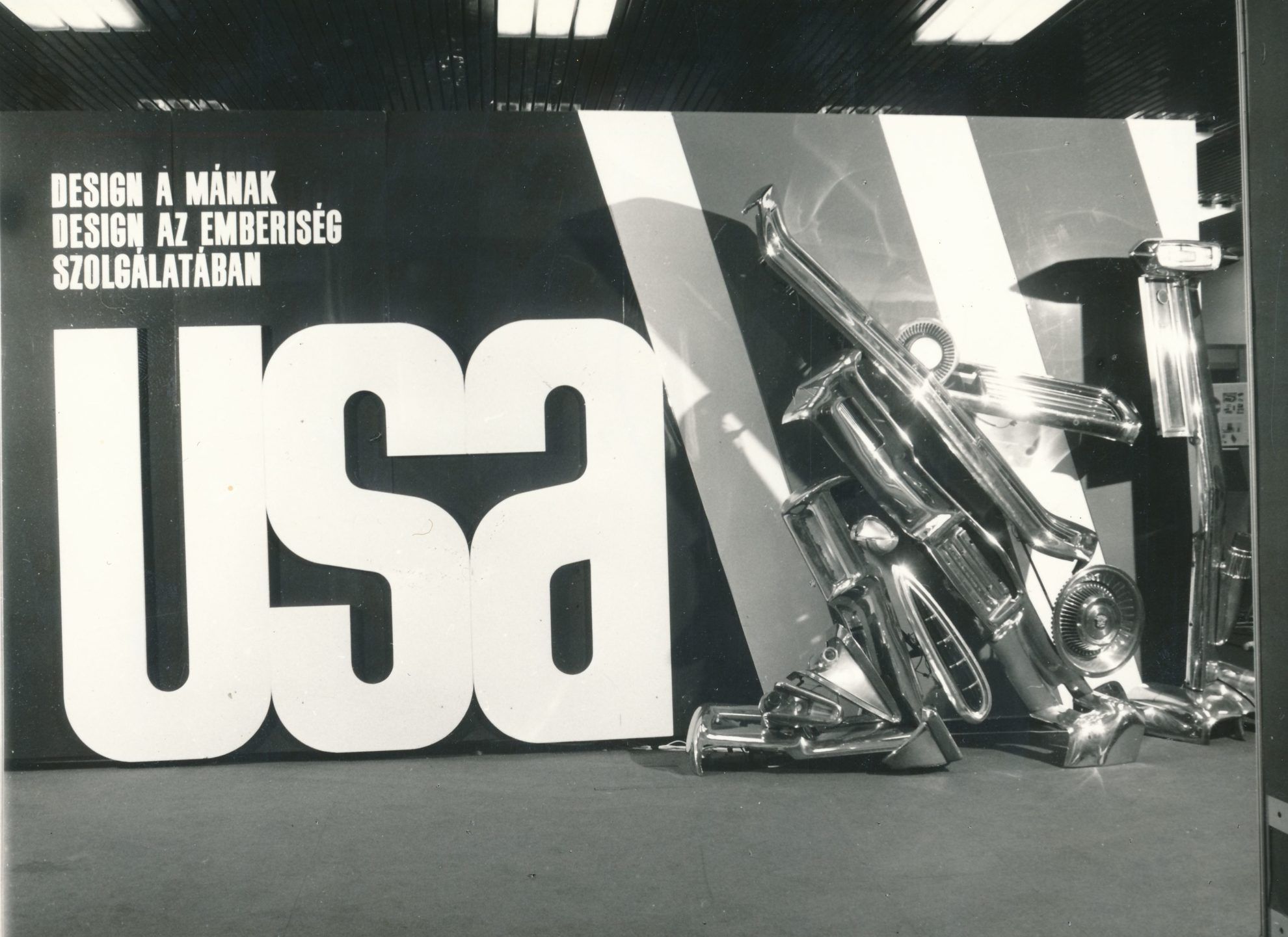

If you need an industrial designer…
One of the main tasks of Design Center was to build a database: in 1976, the compilation of the registry of names and addresses of Hungarian designers and the collection of materials documenting their activity officially commenced. The establishment of the designers’ registry was also important because the Design Center had an easier job recommending a designer to the factory leaders and manufacturers contacting the institution. Until 1984, the data of approximately 1300 designers (education, professional knowledge, references, language proficiency, etc.) were included in the registry. An iconic example of designer recruitment is the story of the “Safari” thermos designed by József Gollob, which started here, within the walls of the Design Center: the head of the Nagykanizsa Glass Factory contacted the management of the center in March 1977, and asked them to recommend an industrial designer who would design plastic-covered thermoses for them. We already presented the later award-winning thermos and its designer in a previous Object Fetish article.
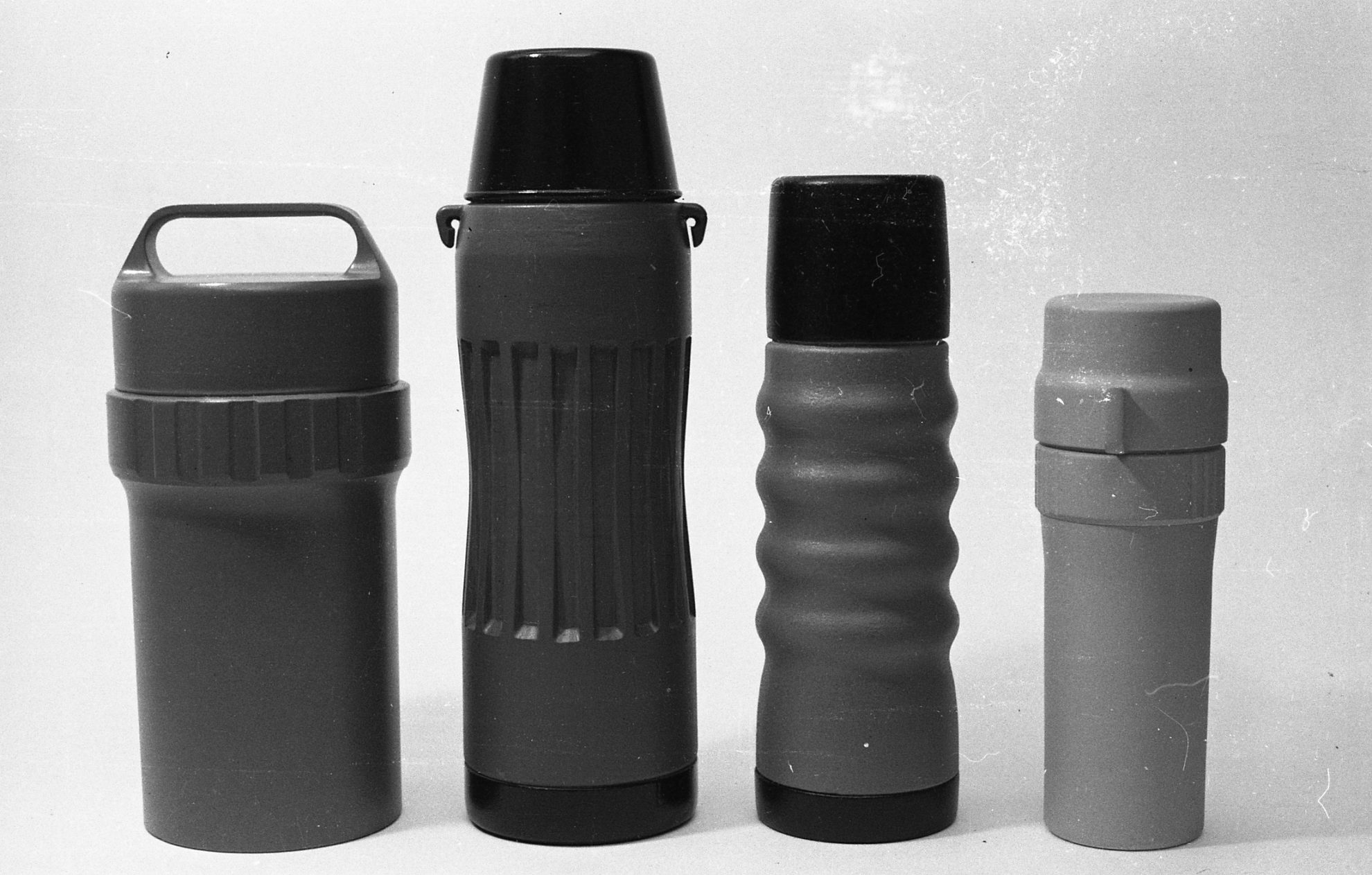
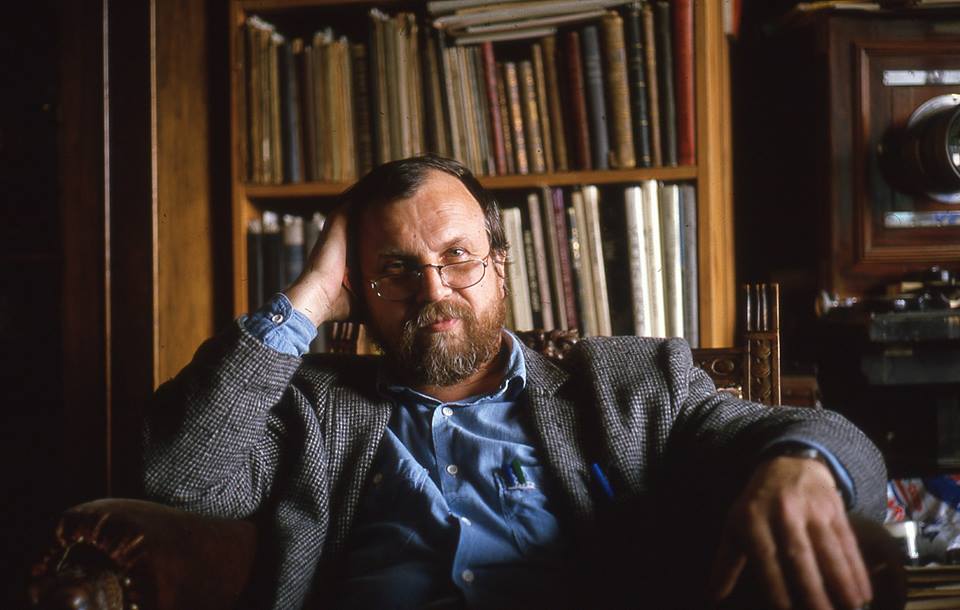
“The triangle of trust”
Anyone having a household object with the trademark used by the Kiváló Áruk Fóruma (Forum of Prime Products) is a lucky person. The sticker known as “the triangle of trust” was given to products that could heir own on the Hungarian market both in terms of technical and aesthetical factors. In order to deserve such a trademark, a product had to go under a serious jury procedure: the employees of the Design Center took part in this product evaluation, and thus helped the work of the National Market Research Institute responsible for conducting the tender. The tender documentation contains the following sentences, amongst others: “The plastic cap used for sprinkling overdoses the salt” or “The emblem is overcomplicated” or “The best before date and the date of manufacturing should be indicated on the nylon bag more clearly.”
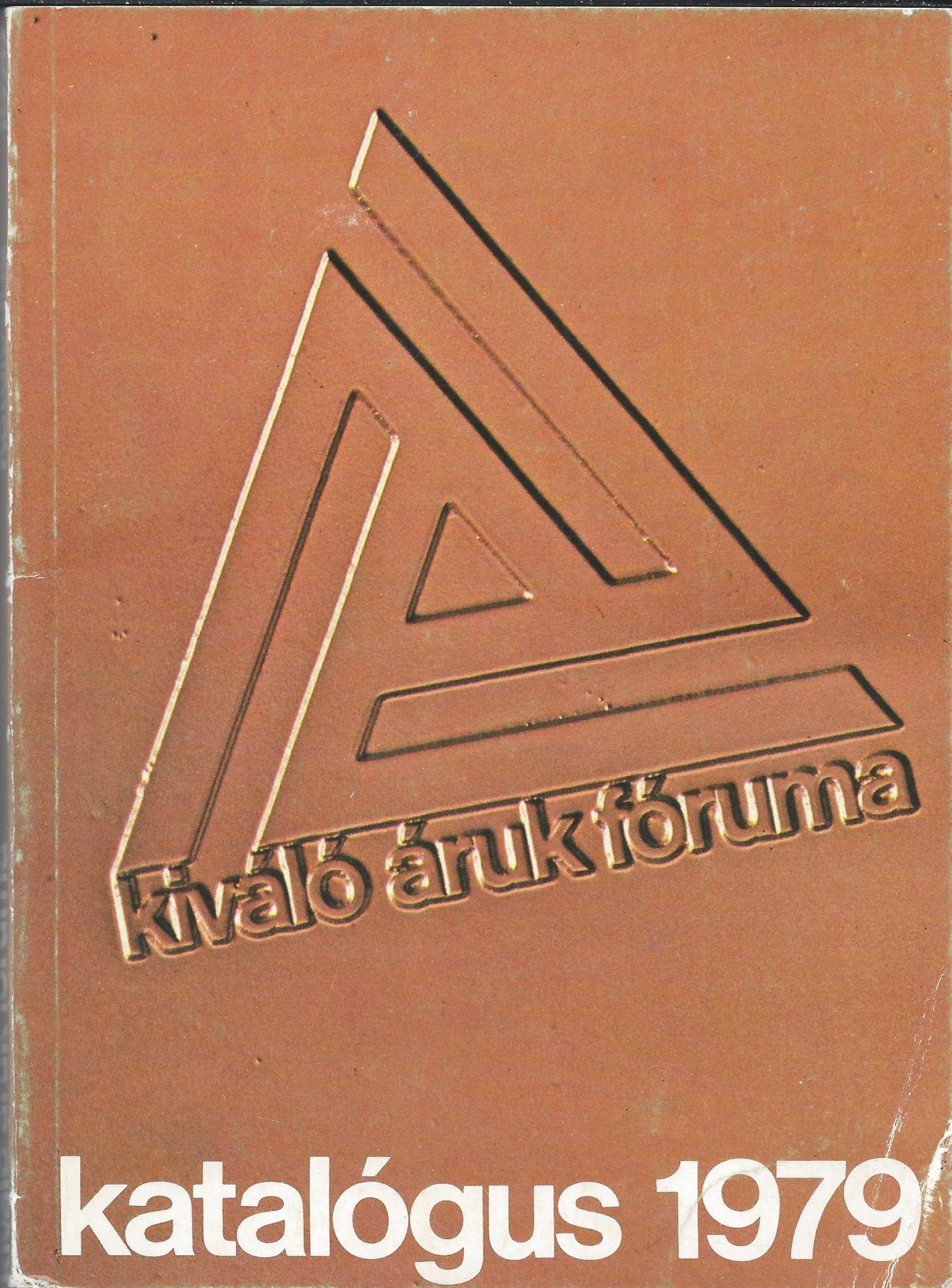
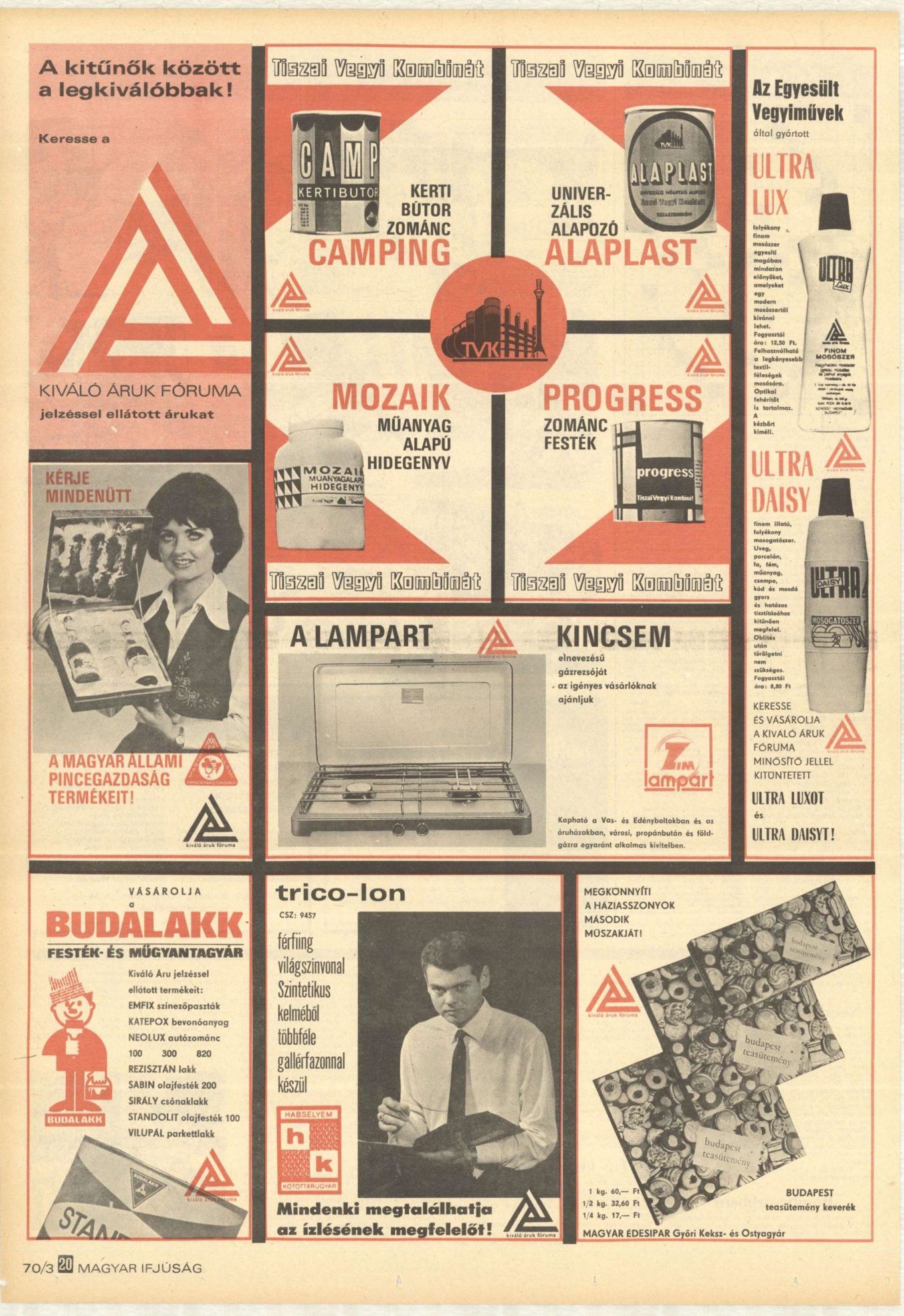
Design Center in the schools
The Design Center also regarded educating the upcoming generations important. Together with the School Television Editorial Office of the Hungarian Television, the Center announced a competition in 1985, under the title “Tervezzünk tárgyakat” (Let’s Design Objects). Students between 9-18 years of age could apply to the competition organized based on English example with novel product ideas aiming to offer a solution to a preferred everyday problem. The competition proved to be very popular amongst students: the professional jury had to evaluate 800 and 2000 projects submitted in 1985 and 1987, respectively. The creative inventions included a tub-bell (to indicate the water level of the tub), a universal baking tray, and rearview glasses to be used during cycling. One of the iconic projects was created by a student in Pécs: the “illuminated cane” served the purpose of allowing grandma to find her cane left in darker spots of the flat. Luckily, a part of the projects submitted is still available today, and we can also take a peek at recordings from the era, on top!
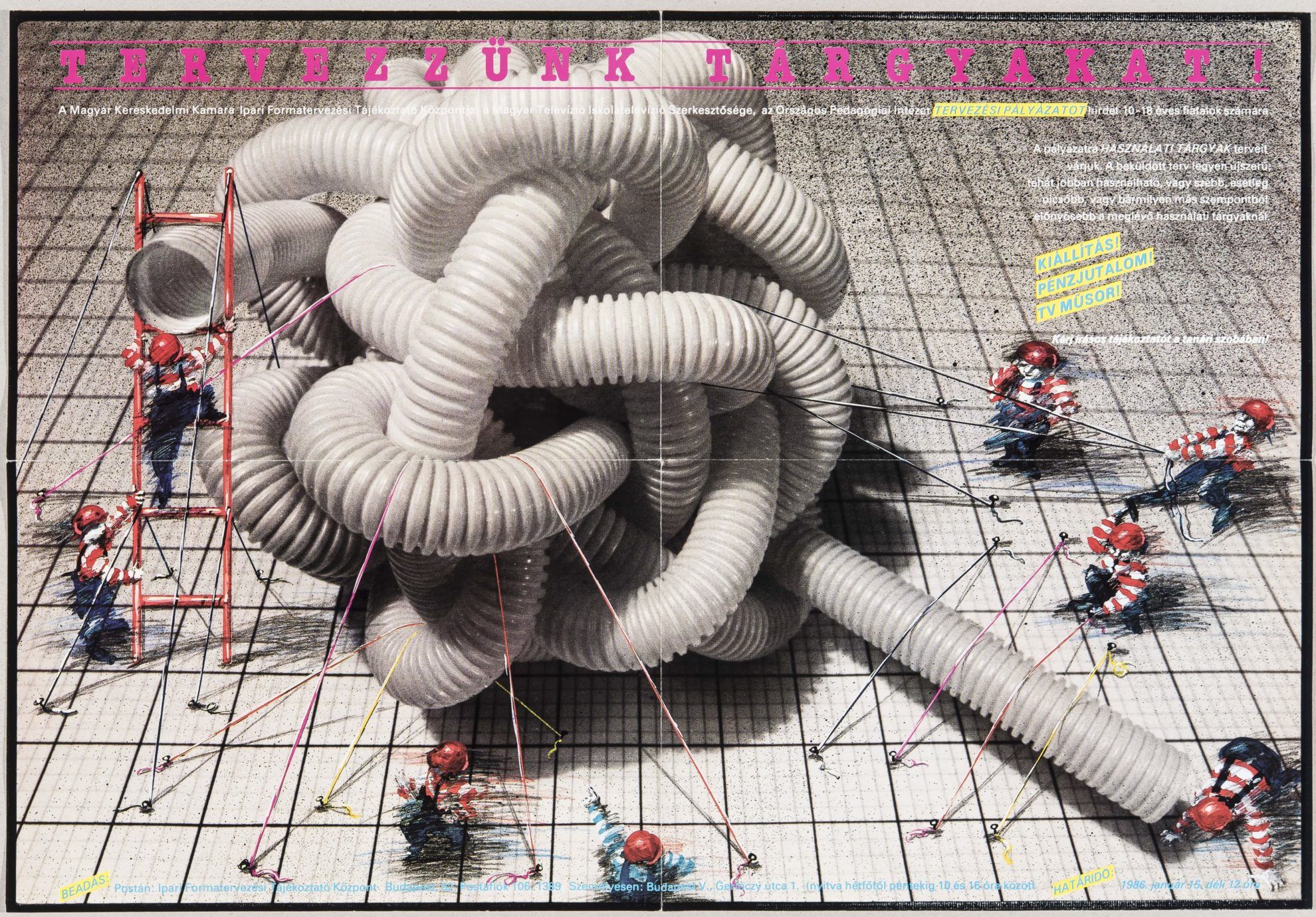
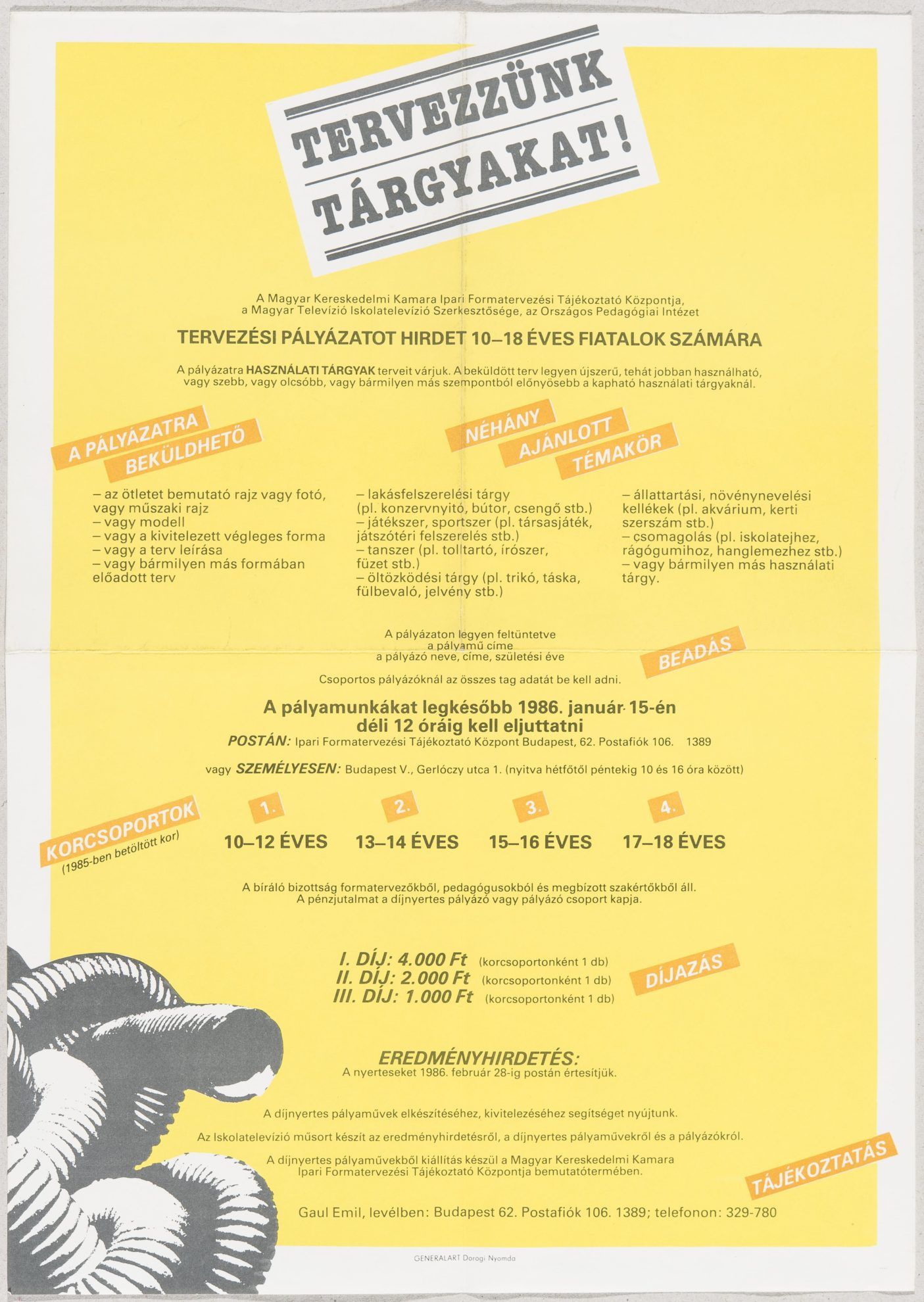
The “Anyagok” (Materials) textbook was created for the first graders of elementary schools, edited by the Design Center. The picture book “illustrates the technical qualities of materials to children in a playful manner. (…) It aims to develop the children’s sense regarding material quality, playful creative spirit and skills” – says the preface of the issue published in 1981.
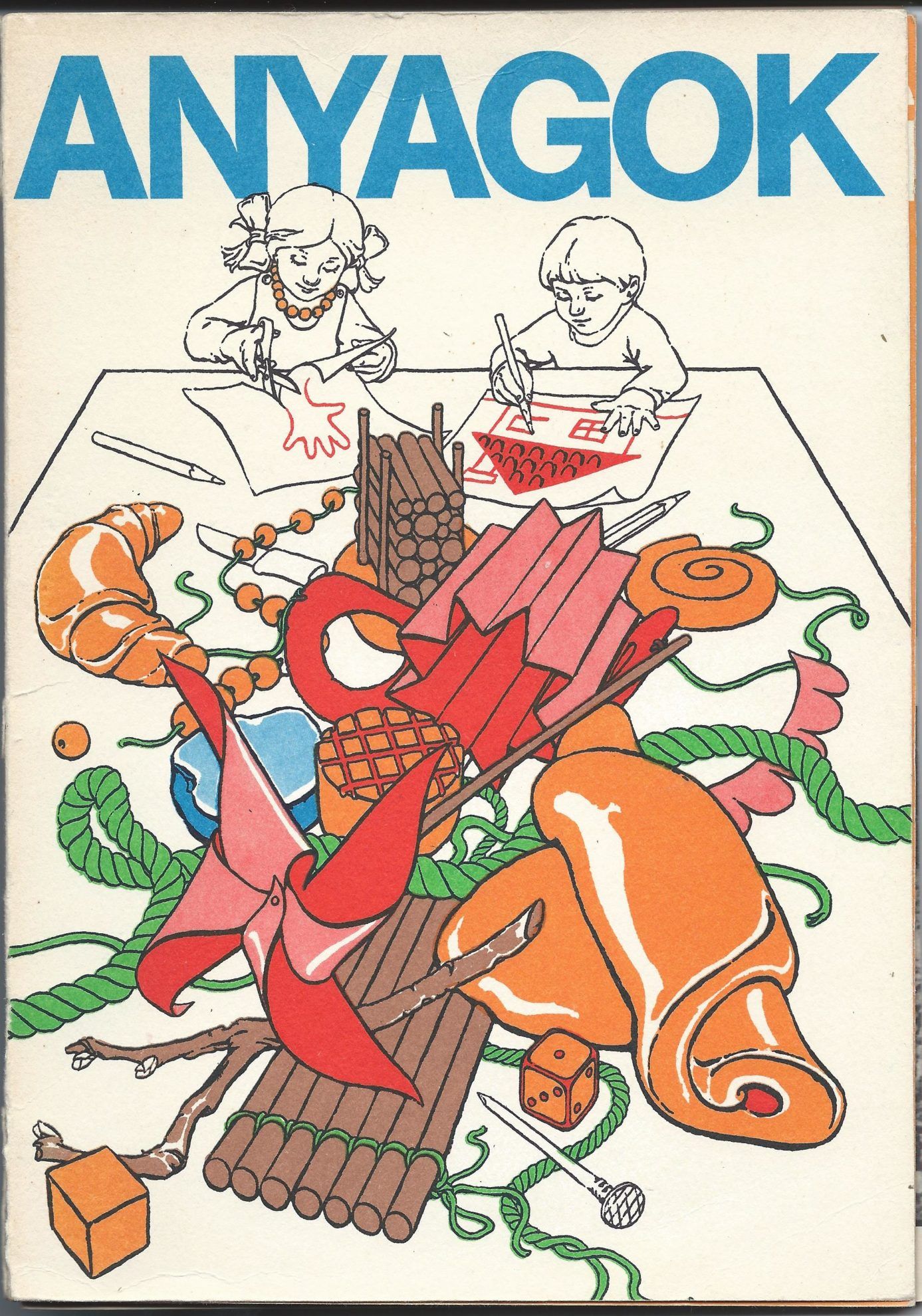
From the kitchen to the bathroom
The good memory of the environment-shaping experiment of the Kitchen Program never faded away completely, therefore, a similar project was designed based on an upgraded and “institutionalized” version of the same in the early ‘80s, focusing on another key area of our homes: the bathroom. Although coordinated collaboration with Hungarian designers remained at the level of promises this time, this was still the first project in which the organization fulfilled an operative role rather than a mediating one. The so-called development programs (let’s call them that) included works such as the implementation of Terv Bank (Idea Bank) I – III. together with the Furniture Industry Division of the Chamber or the Formatervezési Tárgyak Boltja (Store of Design Objects) implemented with Baranya Kereskedelmi Vállalat (Baranya Commercial Enterprise) (1983). A shared feature of these programs was the active and influencing presence of the Design Center: for example, Idea Bank always resulted in a fair, where they offered the ideas mentored by the Design Center for sale, while in the Design Store, they marketed the good quality Hungarian products coordinated in style (many times trademarked by the Forum of Prime Products) selected by experts.
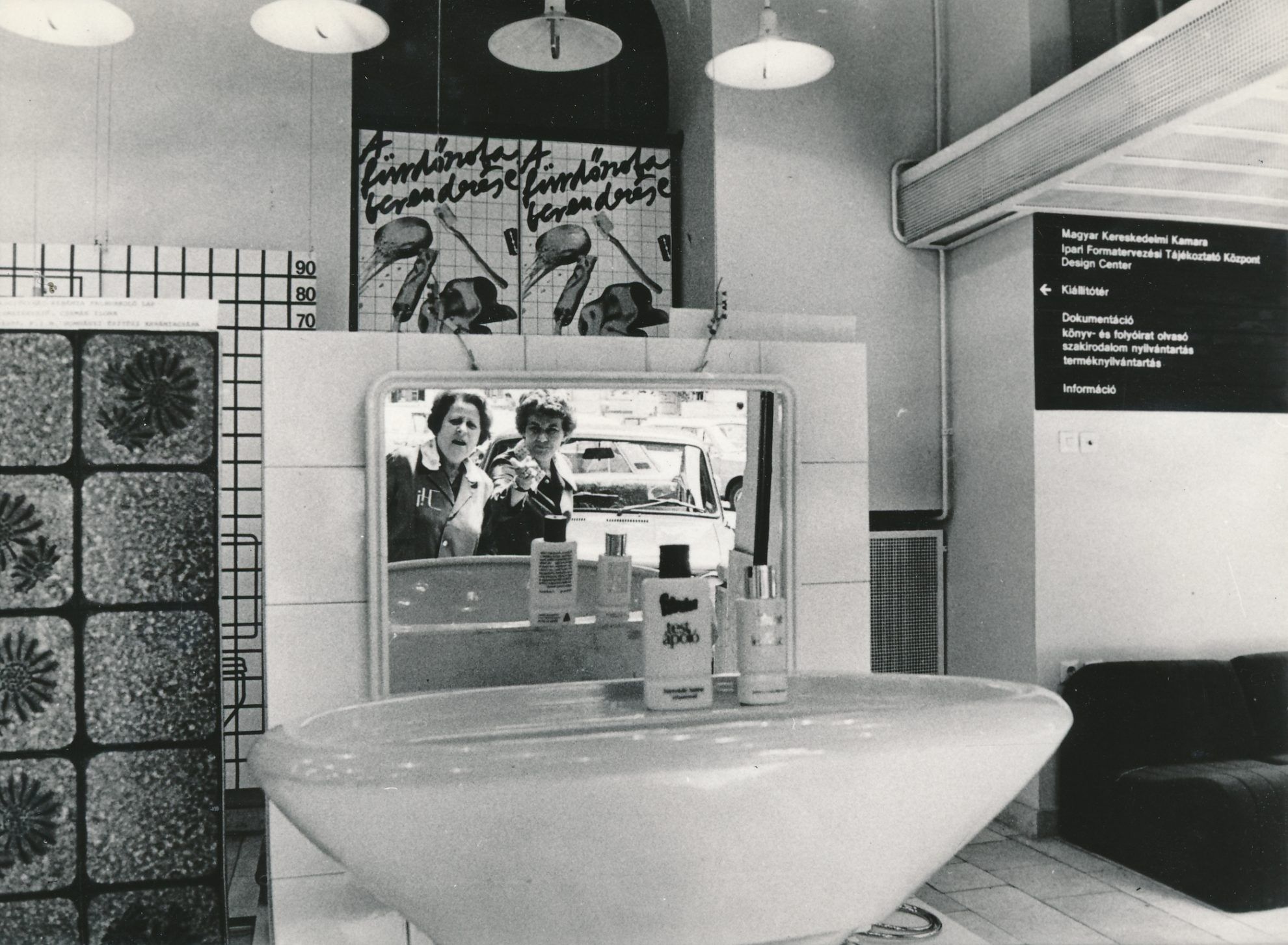
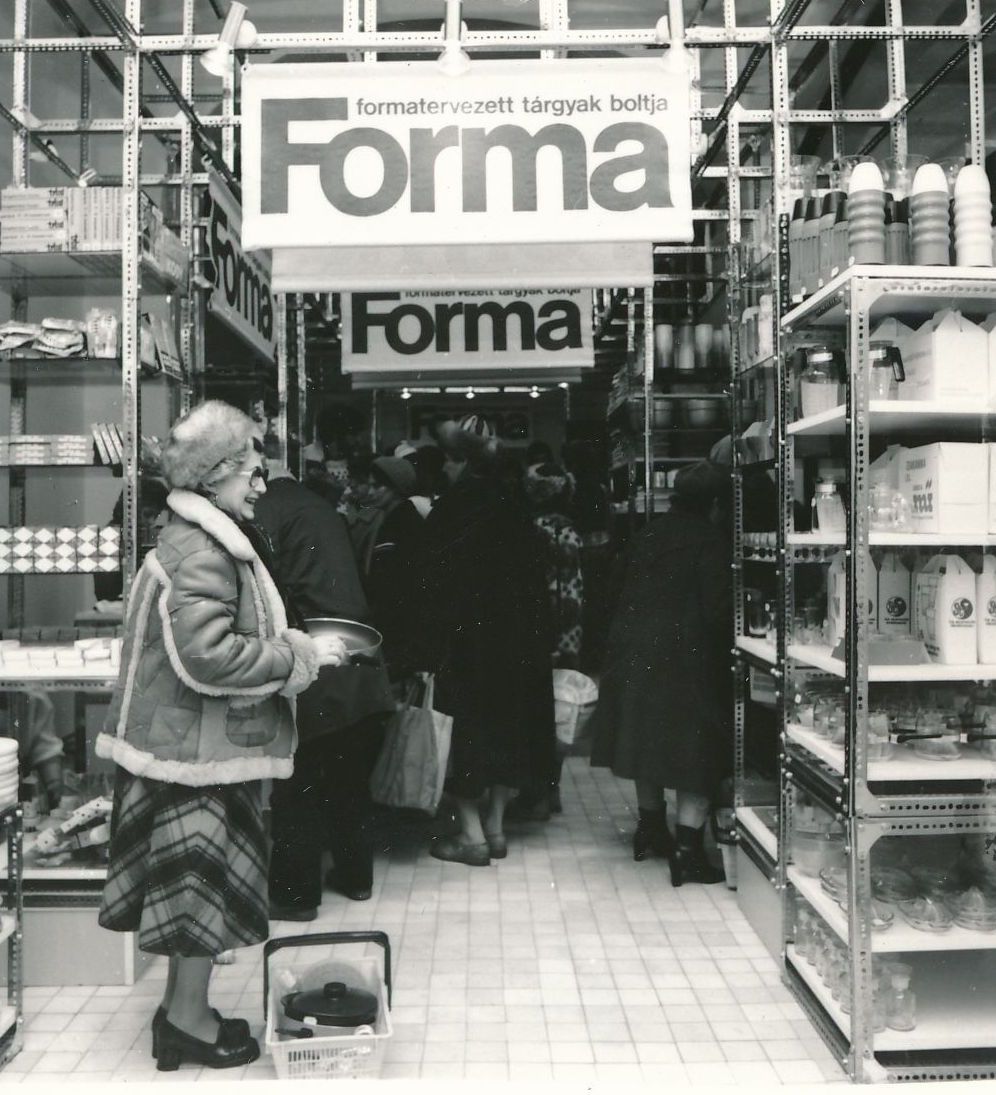
Heritage
The Design Center already put the bittersweet heritage of Socialism to scrutiny in the middle of the eighties, making it one of the heydays of its exhibition-organizing activity. The “Örökség: Tárgy- és környezetkultúra Magyarországon, 1945–1985” (Heritage: Object and environment culture in Hungary, 1945-1985) collected and documented the Hungarian materials of the era relevant from the point of design history in Ernst Museum. The goal was not to present “superdesign”, or perfect prototypes, but to showcase household objects of outstanding value and relevant from the point of sociology. They divided the exhibition into thematic groups along environment culture: they gave a separate section to the street, work and residential environment, as well as to clothing and graphic design. They presented the sections in five year blocks, in chronological order. If you find its catalogue in an antique store, you should jump on it right away, they are quite hard to find on the market…
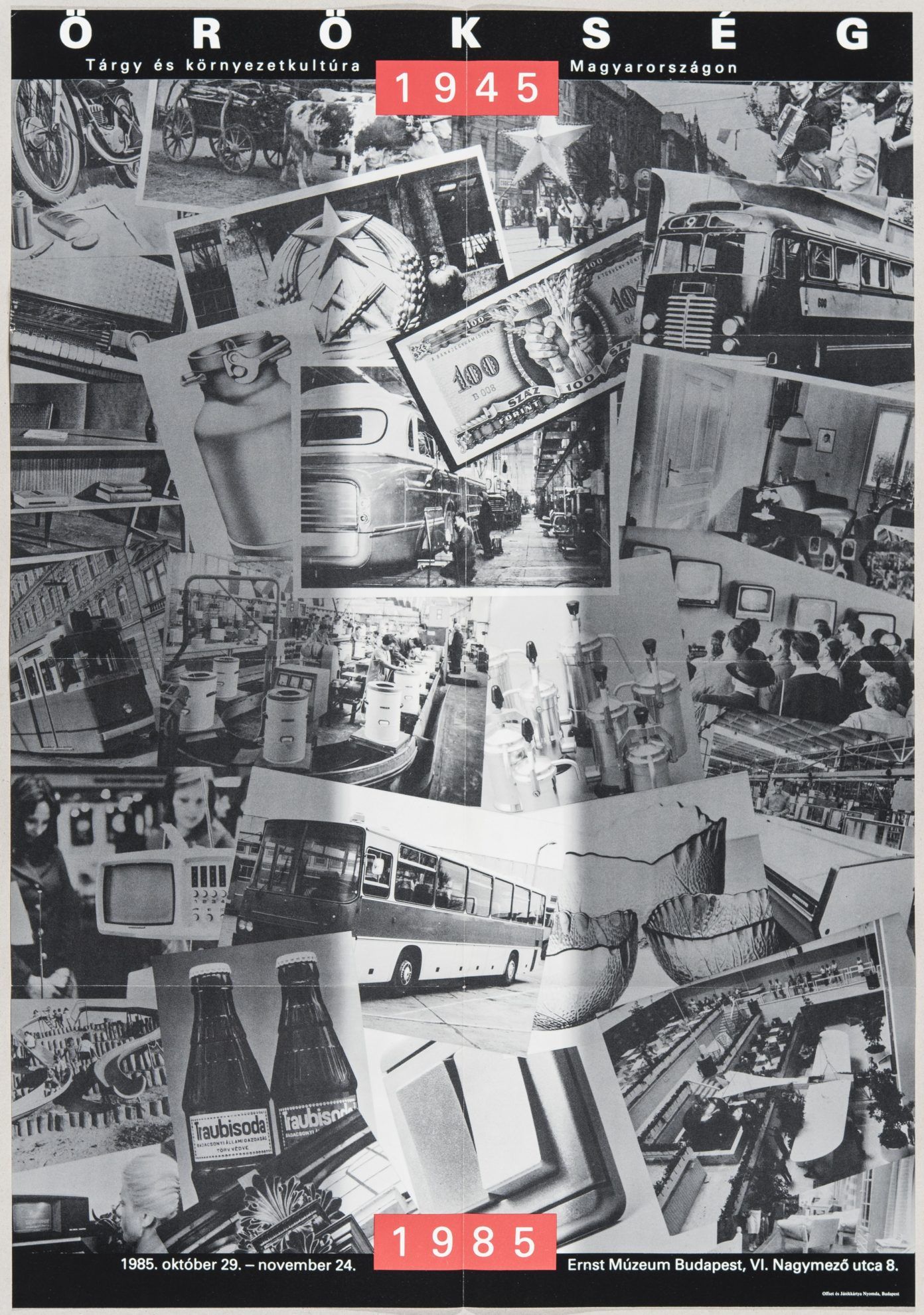
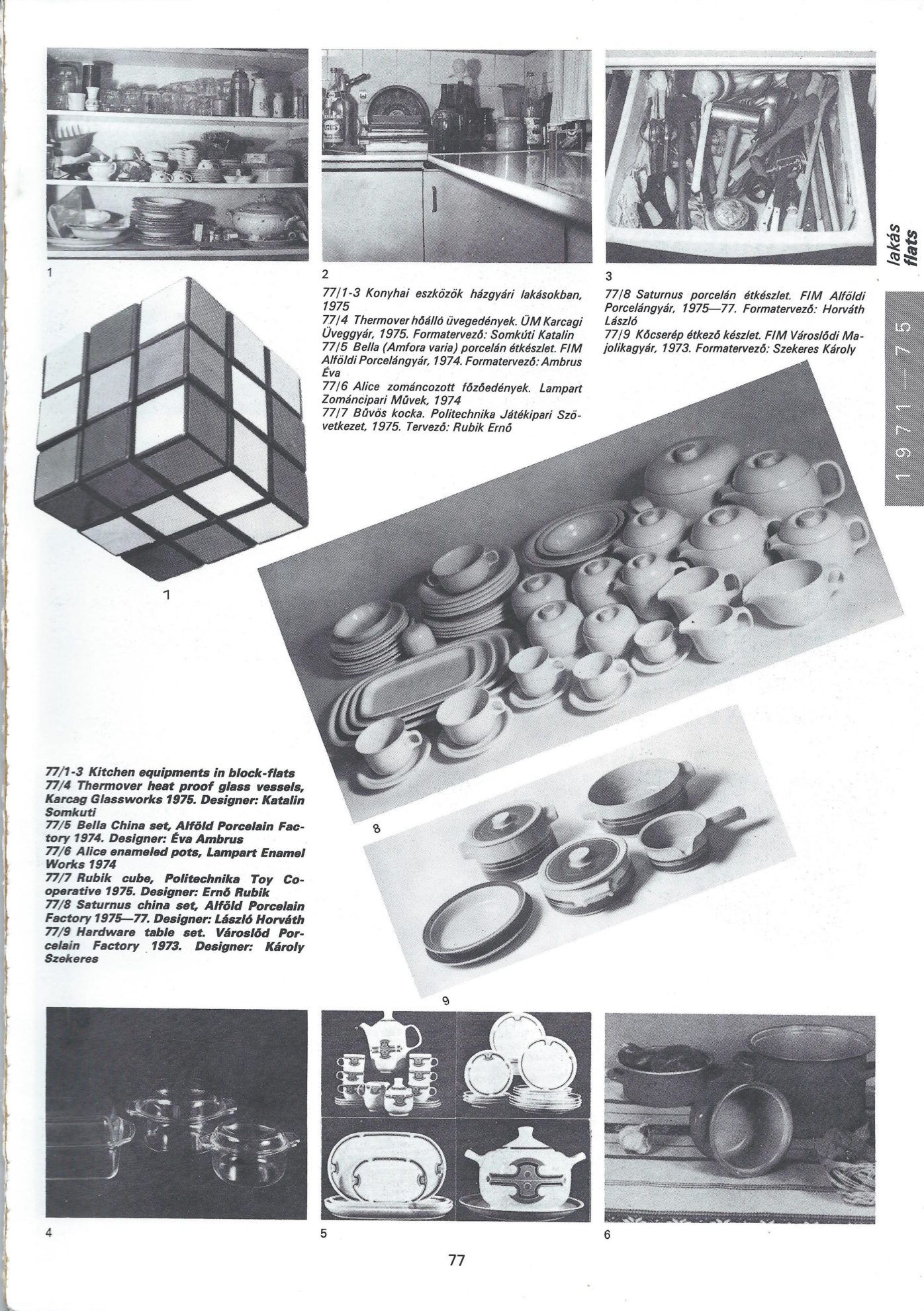
Industrial Design, the “Hungarian design magazine”
The magazine „Ipari Forma”[4] (Industrial Design) was published by Design Center every two months. The paper included case studies, reviews, analyses and design history studies, but it also featured the Hungarian excerpts of articles published in foreign magazines, as well as news and reports about the key events of the Hungarian Design Office and the Design Center. With the paper, the Design Center aimed to allow economic decision-makers and heads of corporations to get to know and understand the (economic) potential of industrial design better.
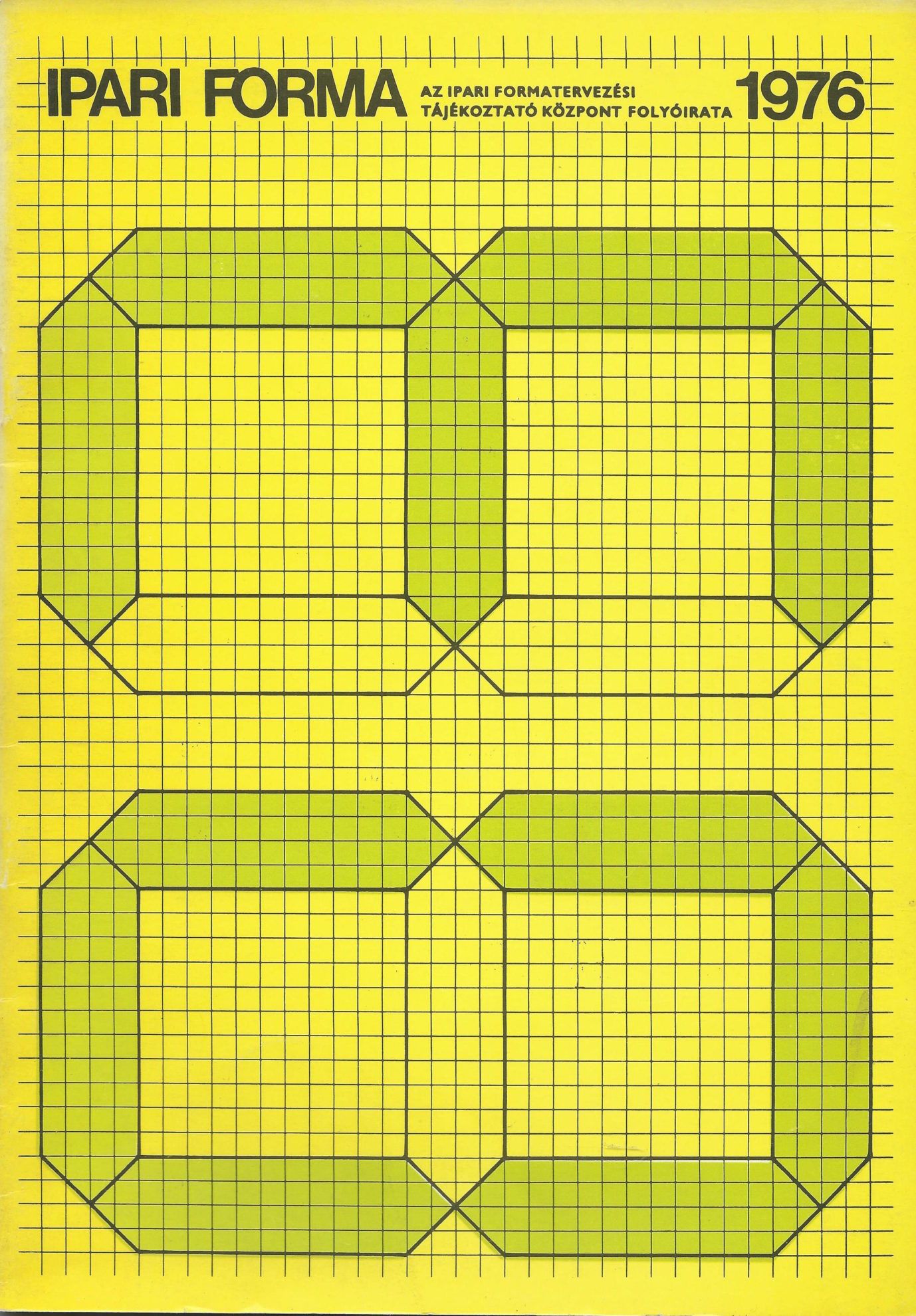

Happy anniversary, Design Center!
Mihály Pohárnok has a vivid memory about the 10th anniversary of the foundation of Design Center: every partner, friend and journalist related to the institution were invited to the exhibition hall on November 13, 1987 for the occasion. At the party held from 10.00 in the morning until 10.00 in the evening, guests were welcomed with cake and small gifts.
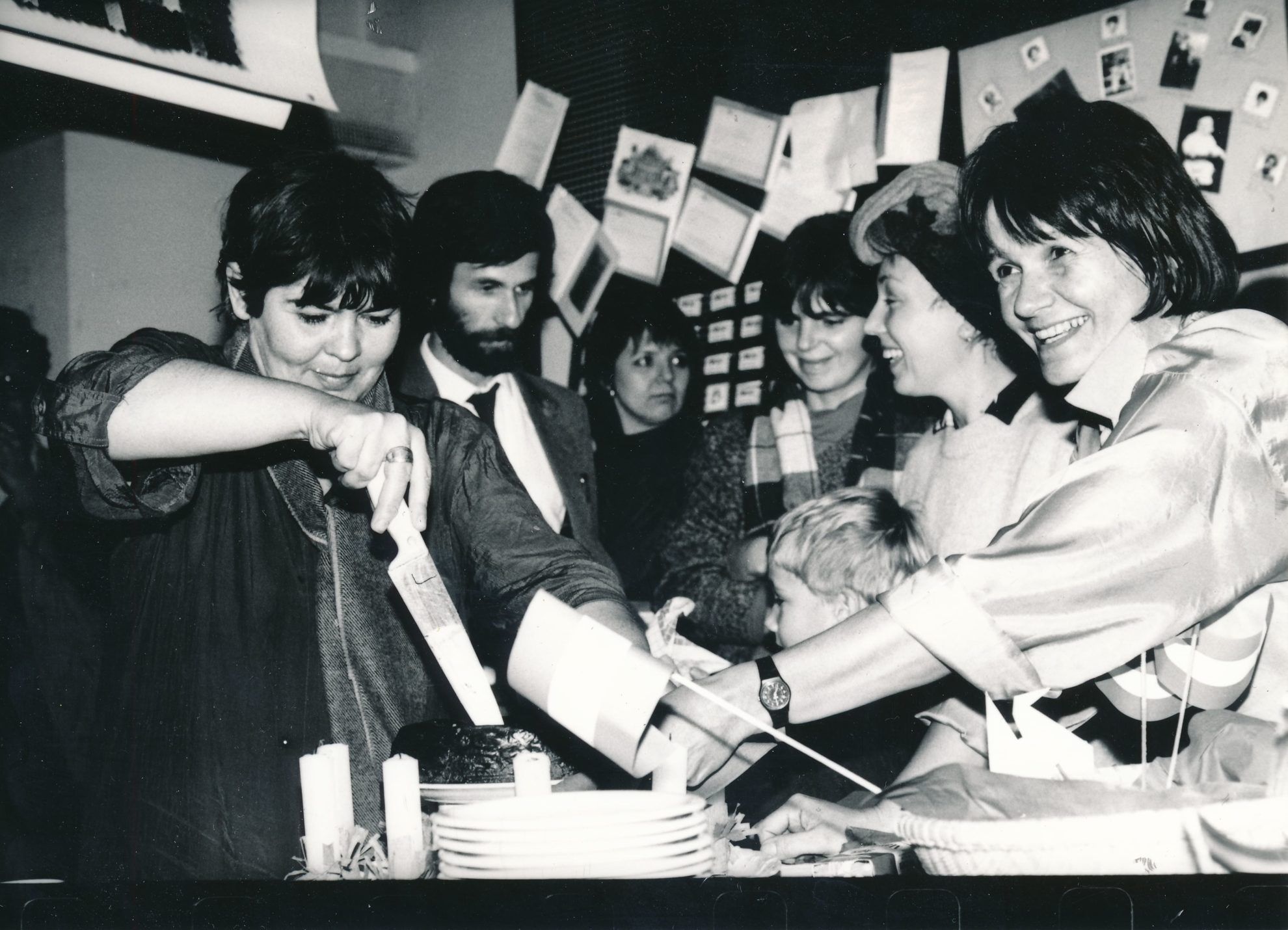
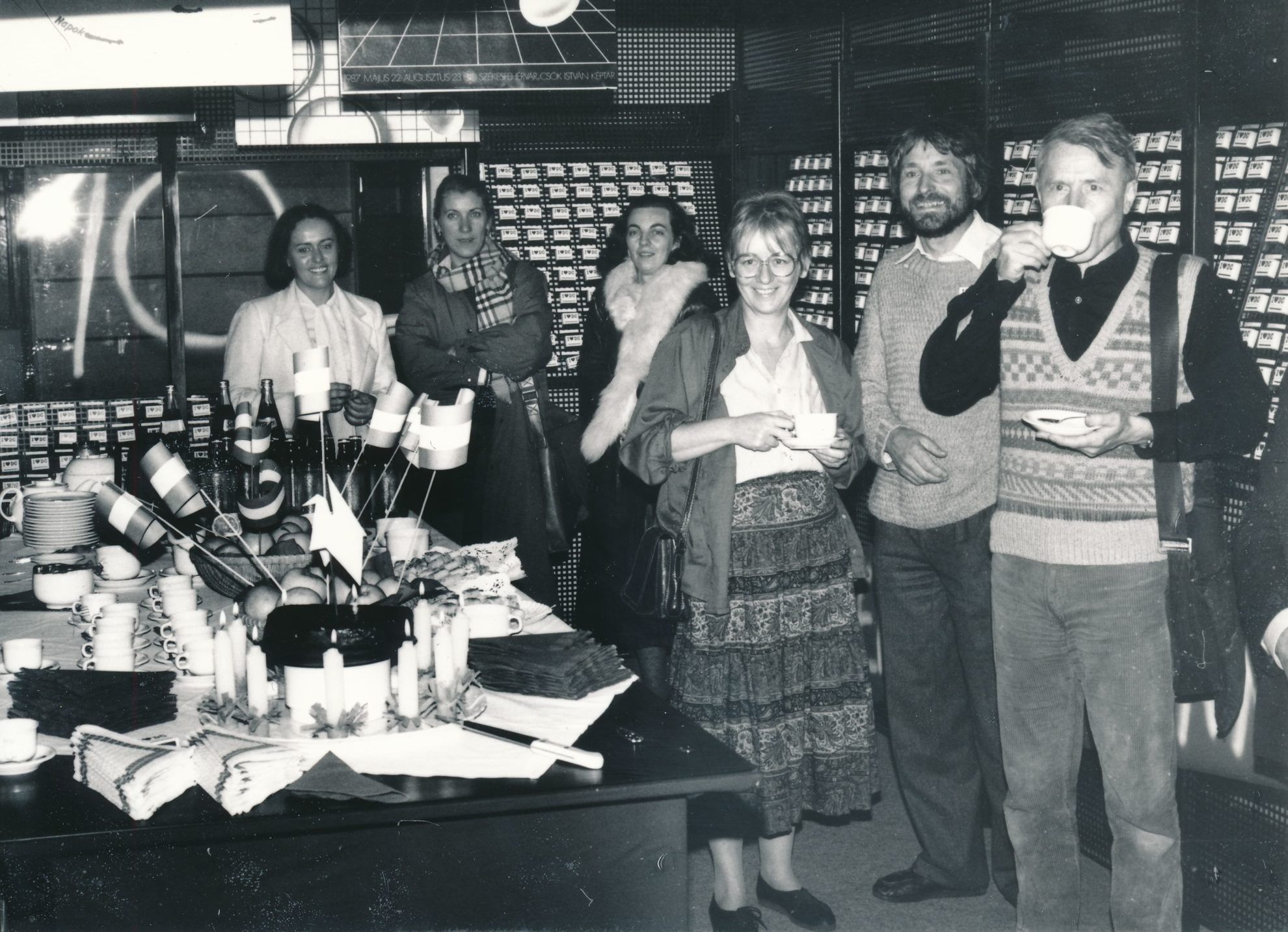
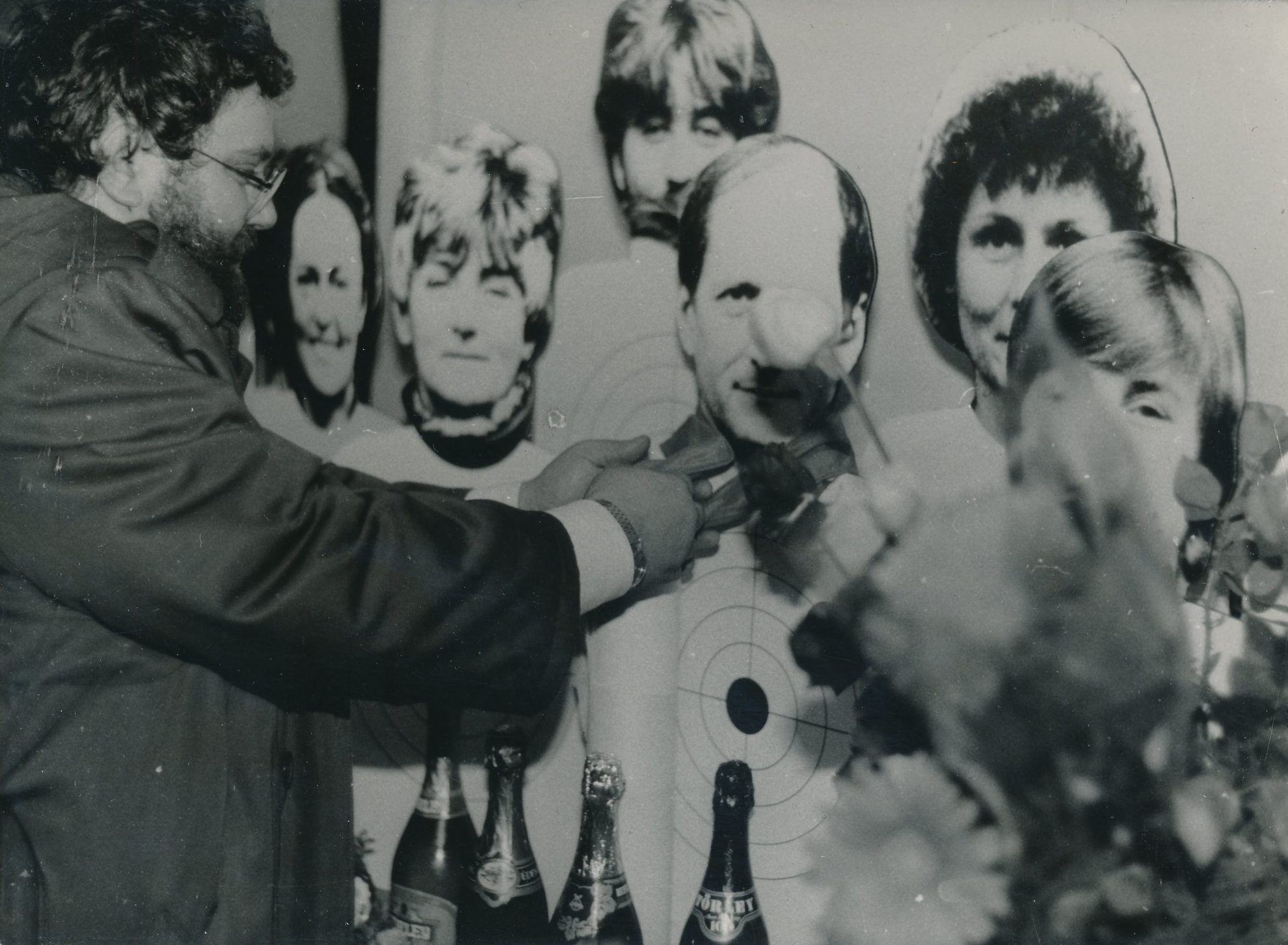
The study titled “The Design Center: The institutional system of design in Hungary between 1975 and 1991” was implemented in the framework of the László Moholy-Nagy Design Grant in 2019. The authors of the study: Kitti Mayer and Eszter Szőnyeg-Szegvári.
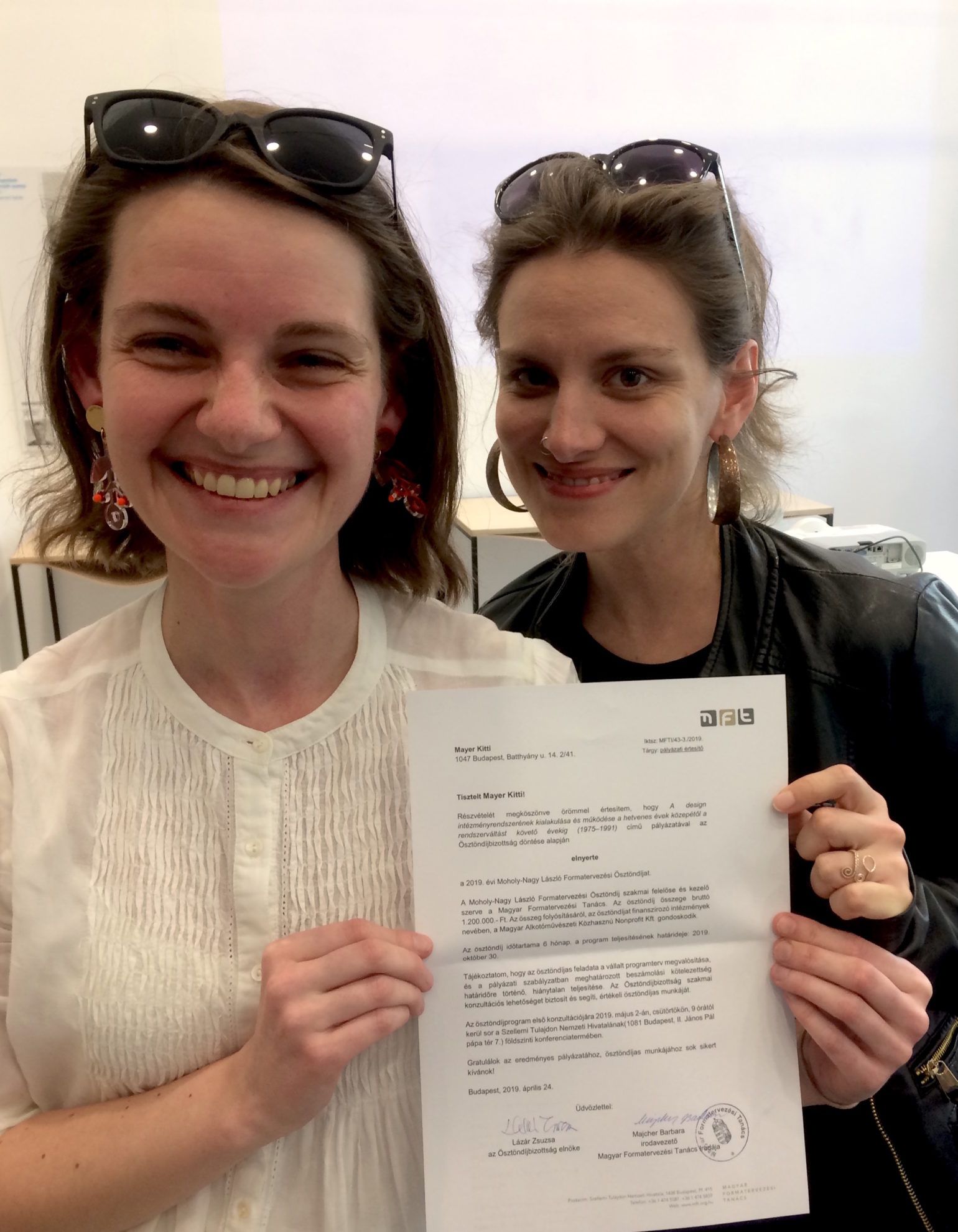
[1] The Council of Applied Arts was founded in 1954 with the Minister of Popular Education being the president. The institution strived to organize the advocacy of designer artists quite far away from the interests of cultural affairs, and the “operation” of the trio of design-production-commerce. The Council had a pioneer role, but in the absence of real powers, the one-man army didn’t get a chance to make changes in the disorganized area of Hungarian design.
[2] The House Factory Kitchen Program was launched in December 1972 with the aim of creating the physical conditions necessary for the smooth operation of house factory kitchens.
[3] And also in architecture history: Béla Pintér’s building was demolished in 2018. You can check it in its former glory here: http://www.kiscellimuzeum.hu/magyar_kereskedelmi_kamara_szekhaza
[4]The “Industrial Design” founded in 1976 was the legal successor of the magazine established by the Council of Applied Arts, „Ipari Művészet” (Industrial Art).

Loyal Wingman I Boeing

Dóra Zsigmond SS20 _ RITUAL collection
